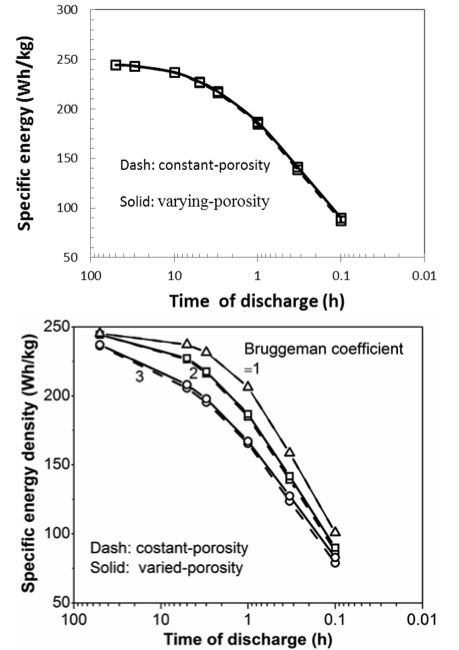
(Bottom) The effect of various Bruggeman exponent on cell performances by two designs: constant-porosity and varying-porosity
Scientific Achievement
A clear and unambiguous quantification of the improvements of a varying porosity design is provided using a mathematical approach.
Significance and Impact
This work shows that varying the porosity can only lead to marginal improvements in energy density compared to well-designed constant-porosity electrodes, and suggests that focusing on decreasing the tortuosity would be a better approach.
Research Details
- An optimization algorithm is developed that allows identification of the optimal design (porosity and thickness) to maximize the energy density for a given time of discharge.
- The optimal constant-porosity and varying-porosity designs are compared in energy density at different time of discharge requirements, showing little improvement when using a varying porosity design compared to a constant porosity design
- The effect of tortuosity variation, represented as a decreasing Bruggeman exponent, on energy density is explored, which shows that decreasing the tortuosity leads to a significant increase in energy density.
Work performed at Lawrence Berkeley National Laboratory (JCESR partner) by Yiling Dai and Venkat Srinivasan; J Electrochem Soc, 2016, 163(3), A406-A416. DOI:10.1149/2.0301603jes

